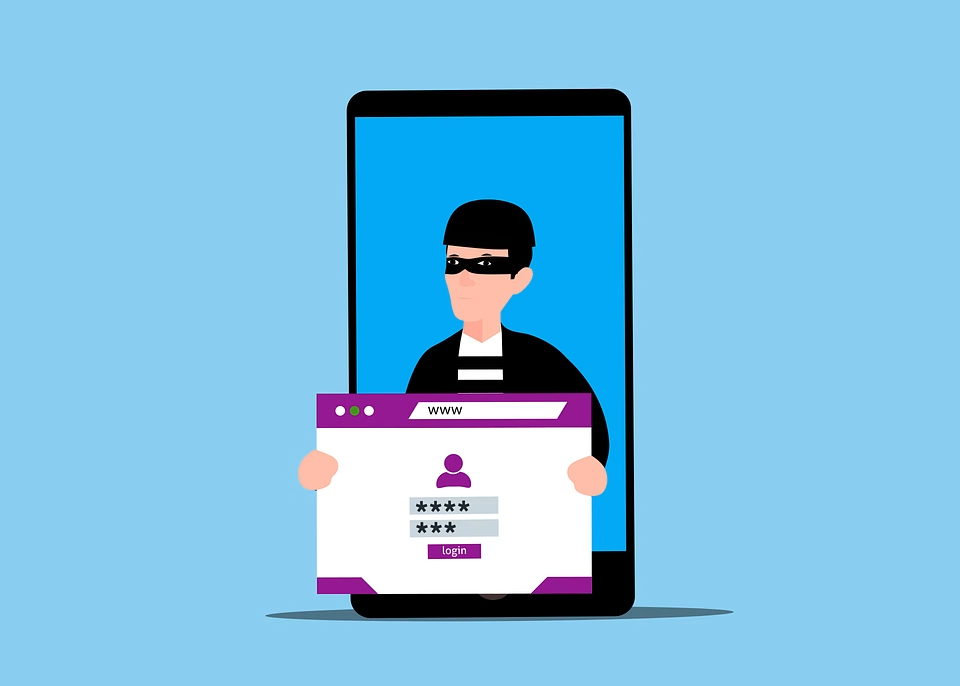Across Southeast Texas—Beaumont, Port Arthur, Orange, and nearby cities—credential theft has become the top cybercrime impacting local businesses. Criminals no longer need to “hack” your network; they simply steal or trick users into revealing passwords. From auto dealers and law firms to CPAs and property managers, every organization that relies on email or cloud apps is a target. A single stolen login can unleash wire fraud, payroll rerouting, and massive data exposure. This post explains how credential theft happens, why it thrives in hybrid work environments, and what Southeast Texas businesses can do to shut it down with help from ParJenn Technologies.
Even well-secured companies can fall victim if they underestimate the value of an employee’s login. Credentials unlock everything—email, accounting, CRMs, and client files. Once compromised, an attacker can move laterally across systems, impersonate executives, or plant ransomware. That’s why every modern security program begins with identity protection.
Why Credential Theft Is So Effective (and Common)
Attackers know the fastest way into a company is through people. Phishing emails, fake Microsoft 365 login pages, and malicious MFA prompts convince users to approve access. These stolen usernames and passwords are sold on the dark web, where automated bots test them against thousands of organizations until one works. Because the credentials are valid, there are no red flags—until it’s too late.
Hybrid and remote work make credential theft easier. Staff often sign in from home networks, personal laptops, or mobile devices. Many use the same password for multiple systems, and small businesses rarely enforce centralized password management. That combination of fatigue and convenience creates a perfect opening for attackers.
- Phishing & MFA fatigue: Attackers spam users with fake approval prompts until one is accepted.
- Credential reuse: Passwords recycled between personal and business accounts allow instant crossover.
- Password spraying: Automated tools try common passwords across many users until one succeeds.
- Session hijacking: Malware steals tokens that let attackers bypass passwords entirely.
Business Impact & Risks by Vertical (Southeast Texas Focus)
Auto Dealers
- Deal funding fraud: Criminals intercept lender emails and alter wiring instructions.
- Customer data exposure: A compromised DMS login leaks driver’s license or finance records, violating the FTC Safeguards Rule.
Law Firms
- Case tampering: Attackers impersonate clients to send fake settlement details or invoices.
- Privilege loss: Stolen mailboxes expose confidential correspondence and damage trust.
CPA Firms
- Payroll & refund fraud: Credential theft in tax portals leads to fraudulent deposits.
- Archival exposure: Old employee logins may still unlock sensitive financial files.
Non-Profits
- Donor deception: Spoofed director emails request “urgent” purchases or gift cards.
- Limited oversight: Small teams make it harder to spot and stop compromise quickly.
Real Estate & Property Management
- Escrow fraud: False wiring instructions divert buyer funds to criminal accounts.
- Tenant privacy breaches: Portal compromises expose leases and identification data.
Engineering Firms
- Intellectual property theft: Stolen SharePoint or CAD credentials leak bids and designs.
- Operational disruption: Ransomware deployed post-compromise halts deliverables and delays contracts.
Practical Steps / Checklist to Reduce Credential Theft
Most organizations can prevent credential theft by enforcing a few high-impact security measures. These aren’t luxury controls—they’re essential business hygiene that stops the majority of account compromises.
- Use phishing-resistant MFA: Replace text codes with number-matching apps or hardware keys. This prevents attackers from using stolen passwords alone.
- Block legacy authentication: Disable outdated IMAP, POP, and SMTP Basic access so attackers can’t log in without MFA.
- Adopt strong passphrases: Require 14-character phrases instead of complex symbols. Easier for users, harder for bots.
- Apply conditional access: Challenge sign-ins from new devices or unexpected countries to stop rogue logins.
- Deploy password managers: Encourage employees to store and auto-generate unique passwords instead of reusing weak ones.
- Ensure device compliance: Only patched, encrypted devices should connect to your business apps—no exceptions.
- Monitor mailbox rules: Alert whenever forwarding or deletion rules appear unexpectedly. Attackers use these to hide activity.
- Watch the dark web: Automated monitoring finds leaked credentials early so resets can occur before misuse.
- Train users every quarter: Realistic phishing tests create awareness and accountability. Repeat until response rates improve.
- Establish an incident plan: Define steps for resetting passwords, re-enrolling MFA, and alerting clients when a breach occurs.
- Govern identity access: Review inactive accounts monthly and remove ex-employee logins to shrink your attack surface.
- Set up risk-based alerts: Tools like Microsoft Entra ID flag sign-ins that don’t match usual patterns—act on them fast.
- Adopt passwordless sign-in: Windows Hello or FIDO2 keys eliminate passwords entirely, ending credential theft at its source.
Tools & Controls (Mapped to MSP/MSSP Services)
ParJenn Technologies integrates these identity protections into every managed service plan, delivering enterprise-grade protection for Southeast Texas businesses:
- Identity Protection: Conditional Access, MFA enforcement, and credential monitoring backed by Guardz and SentinelOne.
- Endpoint Security: Managed EDR/XDR detects infostealers and token theft before it spreads.
- Email Security: Advanced filtering and impersonation defense stop fraudulent login prompts and business email compromise.
- Exposure Monitoring: Continuous scans for leaked passwords and automated reset workflows when breaches occur.
- User Training: Short, engaging micro-courses reflect real attacks seen across Southeast Texas industries.
Explore our Cybersecurity Services and Managed IT Services to see how identity protection and endpoint management work together to stop credential theft before it starts.
Compliance & Cyber Insurance Alignment
Credential theft incidents often become insurance and legal problems, not just IT issues. Carriers now require proof of MFA and identity management before honoring claims. Regulators expect documented “reasonable security” aligned with frameworks like the FTC Safeguards Rule.
ParJenn Technologies helps clients complete insurer questionnaires, gather audit evidence, and maintain policies that match today’s standards. When renewal season comes, having proof of MFA, training, and credential monitoring can prevent rate hikes or outright denials.
- Administrative controls: Maintain written security policies and quarterly access reviews.
- Technical controls: MFA on all admin and remote logins, continuous EDR/XDR monitoring, and centralized logging.
- Training & drills: Annual awareness programs paired with phishing simulations build measurable improvement.
- Evidence readiness: Store reports and screenshots showing controls active before any event.
- Independent validation: Penetration testing and credential-stuffing assessments verify your defenses work.
ROI / Cost Avoidance (Brief, Credible)
Small businesses across Southeast Texas often assume they’re too small for hackers. In truth, stolen credentials are sold in bulk for pennies, making every company a potential victim. A single compromised mailbox can trigger wire fraud, downtime, or insurance investigations costing over $100,000. Most of those losses are avoidable.
- MFA & Conditional Access: Stop 95% of password-based attacks outright.
- EDR/XDR Monitoring: Detect token theft and session hijacking invisible to antivirus tools.
- Mailbox Governance: Catch fraudulent forwarding rules that leak data quietly over time.
- Employee Training: Companies that simulate phishing quarterly report 60% fewer incidents in six months.
- Insurance Readiness: Documentation of active MFA and monitoring can reduce premiums and eliminate claim disputes.
One real-world example: a local auto dealership avoided a $45,000 wire transfer loss after ParJenn Technologies’ system flagged a spoofed email hours before funds were released. Prevention like that pays for itself many times over.
Call to Action
Don’t let credential theft jeopardize your business or reputation. ParJenn Technologies helps Southeast Texas companies close identity gaps and prove compliance before attackers strike.
Book a Discovery Call today to review your credential exposure and receive a tailored protection plan.
Additional Reading
- CISA – Strong Passwords & MFA Basics
- Microsoft Security Blog – Identity & Access Insights
- Verizon DBIR 2025 – Credential Theft Findings
ParJenn Technologies protects Southeast Texas businesses with security-first IT solutions. Explore our Cybersecurity Services or schedule a Discovery Call to strengthen your defenses today.




